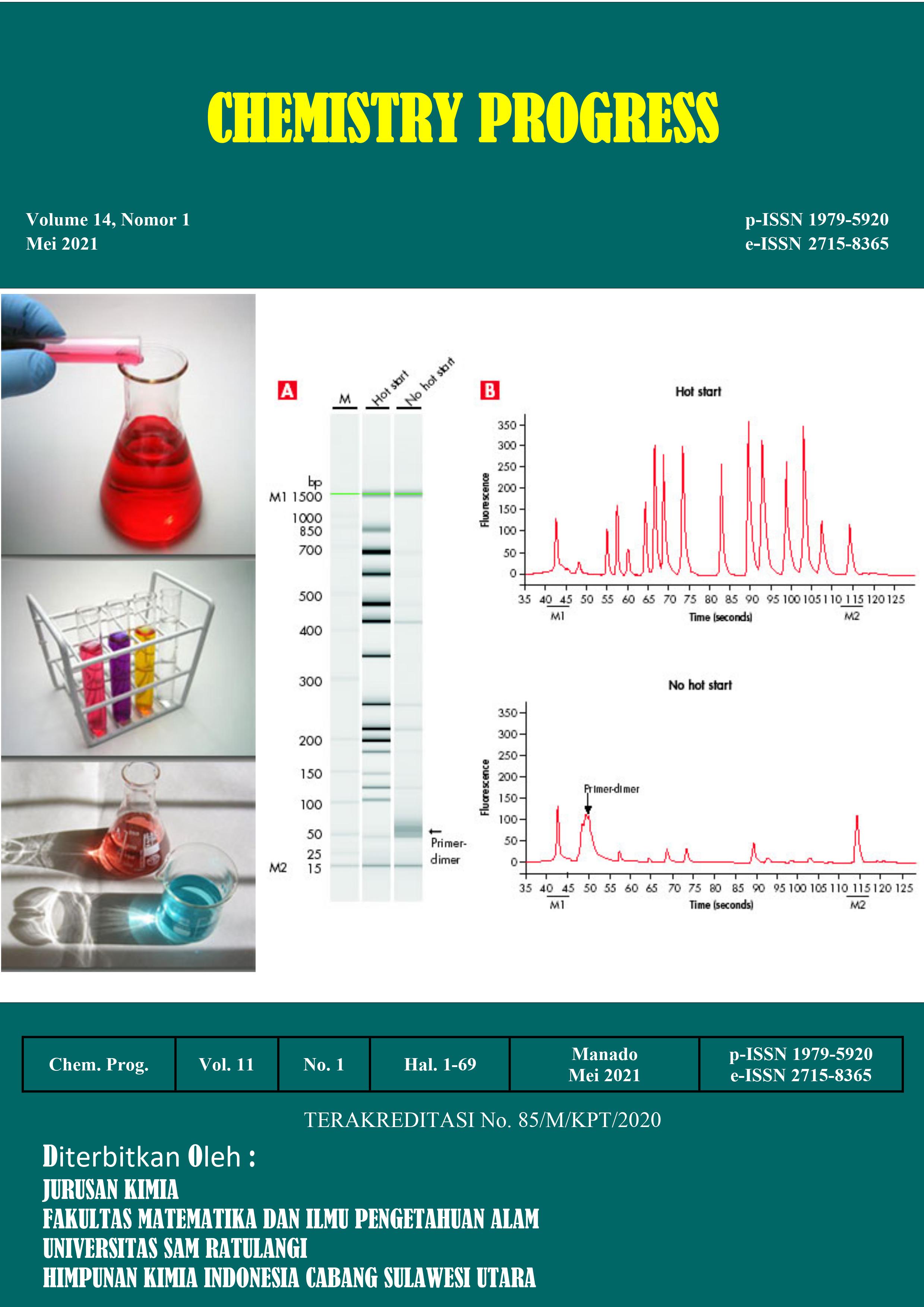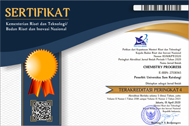AKTIVITAS ANTIOKSIDAN FRAKSI ETIL ASETAT DAN FRAKSI HEKSANA DAUN SOYOGIK (Saurauia bracteosa DC) TERHADAP OKSIDASI ASAM LINOLEAT
DOI:
https://doi.org/10.35799/cp.14.2.2021.37559Keywords:
Soyogik, peroksida, malonaldehidaAbstract
Soyogik (Saurauia bracteosa DC) merupakan tanaman obat yang berasal dari Minahasa Tenggara, Provinsi Sulawesi Utara. Penelitian ini bertujuan untuk menentukan potensi aktivitas antioksidan ekstrak dan fraksi pelarut dari daun soyogik. Ekstraksi dilakukan dengan maserasi menggunakan metanol dan fraksinasi dengan n-heksana dan etil asetat. Kandungan total fenolik ekstrak dan fraksi diukur menggunakan uji Folin-Ciocalteu sedangkan aktivitas antioksidan dievaluasi dengan penghambatan oksidasi asam linoleat dengan metode Ferric Thiocyanate (FTC) dan penghambatan malonaldehid (MDA) dengan metode Thiobarbituric Acid Reactive Substance (TBARS). Hasil penelitian menunjukkan bahwa kandungan fenolik yang dinyatakan dalam ekuivalen asam galat dari ekstrak dan fraksi berkisar antara 50,83-99,67 g/mL. Fraksi etil asetat memiliki kandungan fenolik yang lebih tinggi dibandingkan fraksi heksana dan ekstrak metanol. Hasil penelitian ini juga menunjukkan bahwa fraksi etil asetat, n-heksana, dan α-tokoferol memiliki penghambatan peroksida masing-masing sebesar 50,21, 44,26, dan 46,96% dan penghambatan malonaldehid masing-masing 91,03, 88,81, dan 89,48%. Kemampuan hambat peroksida dan malonaldehid menunjukkan bahwa fraksi etil asetat memiliki aktivitas antioksidan yang lebih tinggi dibandingkan fraksi n-heksana dan a-tokoferol sebagai kontrol positif.
ABSTRACT
Â
Soyogik (Saurauia bracteosa DC) is a medicinal plant originating from Southeast Minahasa, North Sulawesi Province. The objective of study was to determine the potential antioxidant activity of the extract and the solvent fraction of soyogik leaves. Extraction was carried out by maceration using methanol and fractionation with n-hexane and ethyl acetate. The total phenolic contents of extract and fractions were measured using a Folin-Ciocalteu assay while the antioxidant activities was evaluated by the inhibition of linoleic acid oxidation with the Ferric Thiocyanate (FTC) and measuring the malonaldehyde (MDA) inhibition with the Thiobarbituric Acid Reactive Substance (TBARS) methods. The results showed that phenolic content expressed in gallat acid equivalent of extract and fractions ranged from 50.83-99.67 µg/mL. The ethyl acetate fraction has higher phenolic content than hexane fraction and methanol extract. The results showed also that the ethyl acetate, n-hexane fractions and a-tocopherol had peroxide inhibition were 50.21, 44.26, and 46.96%, respectively and the inhibition of malonaldehyde were 91.03, 88.81, and 89.48% respectively. The inhibitory ability of peroxides and malonaldehyde showed that the ethyl acetate fraction had higher antioxidant activity than the n-hexane and a-tocopherol fractions as positive controls.













